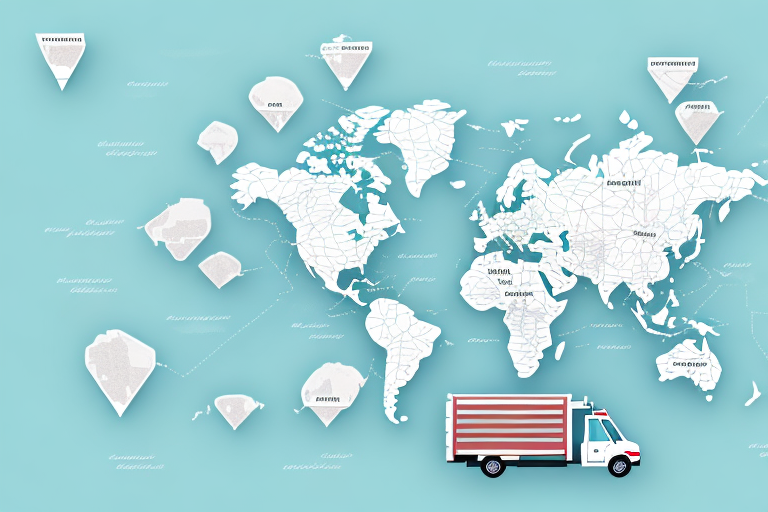Understanding the Importance of Calculating Delivery Fees Per Mile
Shipping is a crucial aspect for almost every business, playing a significant role in the overall cost of products or services. Accurately calculating the delivery fee per mile allows businesses to estimate delivery costs precisely, allocate resources efficiently, and maintain a competitive edge in the market. In an era where customers demand affordable and timely delivery options, businesses that master this calculation can significantly enhance their customer satisfaction and loyalty.
How to Calculate Delivery Fees Per Mile
Calculating the delivery fee per mile is straightforward. The basic formula involves dividing the total delivery cost by the number of miles traveled. For instance, if the total delivery fee is $30 and the distance covered is 15 miles, the delivery fee per mile would be $2.
Steps to Calculate Delivery Fee Per Mile
- Determine Total Delivery Costs: Include all expenses such as fuel, vehicle maintenance, driver wages, and any additional overheads.
- Measure the Distance: Accurately track the number of miles traveled for each delivery.
- Apply the Formula: Divide the total delivery costs by the miles traveled to obtain the fee per mile.
It's essential to consider all expenses to ensure the calculation reflects the true cost of delivery. Ignoring hidden costs can lead to underpricing and reduced profitability.
Key Factors Influencing Delivery Fees Per Mile
Several variables can impact the calculation of delivery fees per mile, affecting both the cost and efficiency of delivery operations.
Distance Traveled
Longer distances naturally incur higher costs due to increased fuel consumption and vehicle wear and tear. Efficient route planning can help minimize unnecessary mileage.
Weight and Size of the Product
Heavier or bulkier items require more fuel and may necessitate specialized handling, increasing delivery costs.
Mode of Transportation
The type of vehicle used—whether it's a bike, car, truck, or van—affects fuel efficiency and maintenance costs. For example, larger vehicles typically consume more fuel, leading to higher delivery fees.
Additional Factors
- Time of Day: Deliveries during peak hours may require more resources due to traffic congestion.
- Weather Conditions: Adverse weather can slow down deliveries, increasing fuel consumption and time.
- Road Congestion: Busy routes can extend delivery times and mileage.
Strategies to Optimize Delivery Fees Per Mile
Optimizing delivery fees per mile can lead to significant cost savings and operational efficiencies.
Utilize Advanced Routing Software
Implementing technology-driven route planning tools can help identify the most efficient paths, reducing both mileage and fuel consumption.[1]
Flexible Delivery Options
Offering various delivery options, such as same-day or scheduled deliveries, allows customers to choose based on their needs, helping manage delivery loads more effectively.
Collaborate with Other Businesses
Partnering with other companies or utilizing shared delivery services can spread out delivery costs, making fees more affordable for all parties involved.
Implement Tiered Pricing Structures
Adjusting delivery fees based on order size or delivery distance encourages larger purchases and optimizes delivery routes.[2]
Impact of External Factors on Delivery Fees
External variables such as fuel prices and technological advancements play a significant role in determining delivery fees per mile.
Fluctuating Fuel Prices
Rising fuel costs directly increase delivery expenses. Businesses can mitigate this by investing in fuel-efficient vehicles or exploring alternative transportation methods like electric scooters.[3]
Technological Advancements
Modern technologies, including GPS tracking and data analytics, enhance route optimization and cost estimation, leading to more accurate delivery fee calculations.[4]
Case Studies of Successful Delivery Fee Calculations
Several companies have effectively implemented delivery fee per mile calculations to streamline their operations and enhance customer satisfaction.
Amazon
Amazon uses sophisticated algorithms to determine delivery fees based on distance, package size, and delivery speed, enabling them to offer competitive pricing and efficient delivery services.[5]
Uber Eats
Uber Eats calculates delivery fees using a dynamic model that considers distance, time of day, and demand, allowing for flexible pricing that adjusts to real-time conditions.[6]
Avoiding Common Mistakes in Delivery Fee Calculations
Accurate delivery fee calculations are crucial, but businesses often make mistakes that can lead to underpricing or customer dissatisfaction.
Overlooking Hidden Costs
Failing to account for all delivery-related expenses, such as tolls, insurance, and driver overtime, can result in undervaluing delivery fees.
Ignoring Market Trends
Not keeping up with industry standards and competitor pricing can make a business less competitive.
Incorrect Distance Measurement
Using inaccurate distance measurements can skew delivery fee calculations, leading to overcharging or undercharging customers.
Solution: Comprehensive Pricing Strategy
Developing a pricing strategy that incorporates all potential costs and regularly reviewing it against market trends ensures accurate and competitive delivery fees.
Conclusion
Calculating delivery fees on a per-mile basis is essential for businesses aiming to optimize their delivery operations and offer competitive pricing. By considering all influencing factors, utilizing advanced technology, and avoiding common pitfalls, businesses can enhance their delivery efficiency, reduce costs, and build a loyal customer base. Implementing a robust delivery fee per mile strategy not only improves profitability but also fosters trust and satisfaction among customers.






















